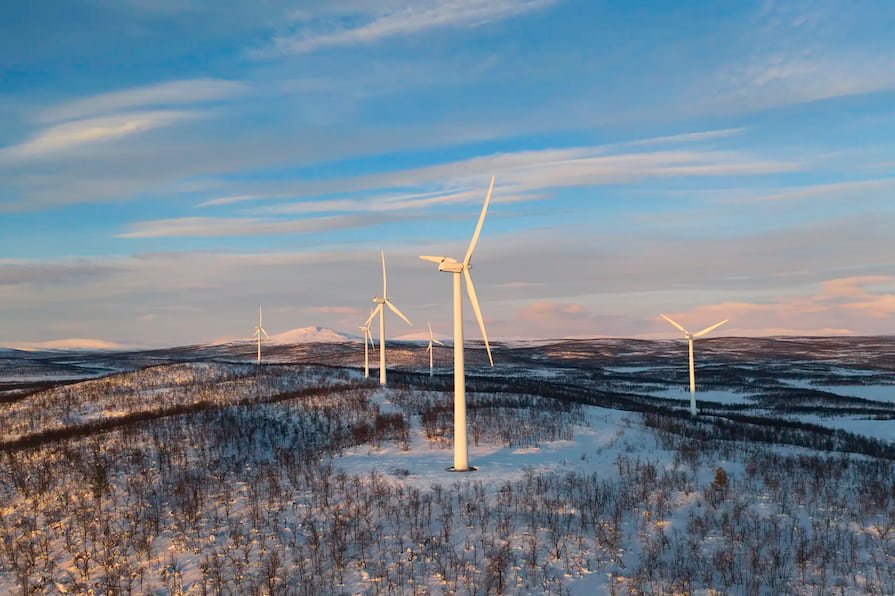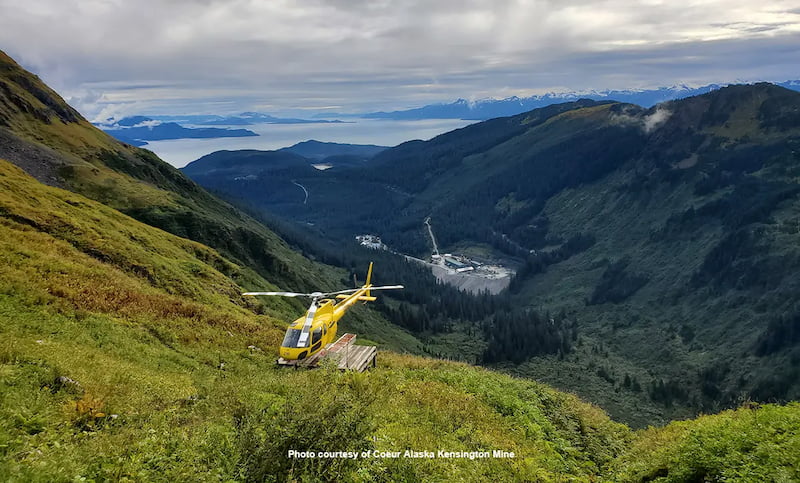
Alaska’s Mining Potential

Alaska Mining Holds the Key to a Sustainable World
As we shift towards renewable energy sources such as hydro, wind, and solar, it becomes increasingly clear that Alaska's abundant minerals and metals play a vital role in this transition. The state has earned a reputation for pioneering responsible resource management, gaining respect on a global scale.
To support this effort, Alaska has established a regulatory system that ensures mining practices are not only ethical but also sustainable. This includes adherence to strict state and federal environmental laws such as the Clean Water Act and the National Environmental Policy Act (NEPA), ensuring rigorous permitting processes. The state harnesses advanced mining technology, employing cutting-edge techniques like advanced tailings management facilities with geomembrane liners and progressive reclamation efforts to minimize environmental impact.
While resource extraction inherently presents environmental challenges, Alaska's regulatory framework and industry practices mitigate risks through rigorous environmental impact assessments, continuous water quality monitoring, and comprehensive reclamation plans aimed at restoring disturbed lands.
Our commitment to environmental stewardship remains strong, as we actively work to preserve Alaska's natural beauty for future generations. We also prioritize community investments, collaborating closely to guarantee that local residents reap the benefits of our resources through initiatives such as local hiring preferences, vocational training programs, and direct contributions to community infrastructure projects and educational scholarships.

Empowering Alaska’s Economy with Responsible Mining
Alaska's mining sector serves not only as a vital industry but also as a driving force behind local economies and communities. Its role as a key employer and economic catalyst is evident, particularly in 2022 when the industry's $1 billion expenditure significantly benefited around 450 local businesses and supported over 11,400 jobs, resulting in a $1 billion wage impact.
Furthermore, the importance of fostering collaborative relationships with community stakeholders cannot be overstated; such partnerships are crucial from the project's inception through to reclamation and closure, ensuring the long-term prosperity of the communities involved.
"Alaska's founders knew responsible resource development was key to a secure and prosperous state, and our experience with True North shows that they were right. The developers leased state land, produced a valuable commodity to serve global markets, employed Alaskans, and paid state taxes and royalties. When they were done, they remediated the effects of their work and returned the land to the state for its next use. The system works." -Alaska DNR Commissioner Corri Feige, SOA DNR Joint Press Release: October 27, 2020
Global Mineral Leadership
Alaska's mineral reserves play a crucial role in various sectors, including technology, renewable energy, and national security. This strategic importance positions the state as a global leader in mineral resources.
Notably, Alaska is home to significant amounts of essential minerals: it contains around 3% of the world's zinc and 3.5% of its gold, alongside considerable quantities of silver, lead, and copper. This is exemplified by operations like the Red Dog Mine, one of the world's largest zinc producers, and the Fort Knox Mine, a cornerstone of Alaska's gold industry. These reserves not only support the local economy but also contribute to global efforts in advancing sustainable practices and ensuring security in resource supply by reducing reliance on foreign sources for critical minerals essential for everything from electric vehicles to defense technologies.
In essence, Alaska’s rich deposits of minerals are not just numbers on a map; they are foundational resources that hold the potential to drive innovation and secure energy independence on a global scale. The value of these reserves extends beyond mere statistics, highlighting Alaska's vital role in a rapidly evolving world.
Championing Sustainable & Responsible Alaskan Mining Practices
Alaska sets the standard for ethical mining by balancing economic growth with environmental preservation, establishing itself as a benchmark for responsible extraction. The state's sustainable practices and commitment to land restoration further showcase Alaska as a leader in ethical mining.
Alaska’s mining industry has rich potential and promise as a sector crafting a sustainable, secure, and prosperous future for all.
AK Mining for a Prosperous Future
Alaska's mining industry is on the verge of significant expansion, having attracted over $8.1 billion in investments since 1982. This influx of capital not only positions the industry for remarkable growth but also promises to enhance exports, generate tax revenue, and create numerous jobs for local communities.
Beyond its current strengths, Alaska's geological potential for critical minerals like cobalt, graphite, and rare earth elements is increasingly being explored, promising to cement its role in future sustainable technologies further. It demonstrates that economic prosperity and environmental responsibility can go hand in hand, paving the way for a thriving economy that respects and preserves the natural beauty of Alaska.
Frequently Asked Questions About Mining in Alaska
Is mining bad for Alaska?
No. Alaska has strict regulations that keep mining projects in check. You’ll see required permits, constant monitoring, and full reclamation plans before a shovel even hits the ground. Mining is good for Alaska because it brings long-term jobs, revenue, and investment, without skipping out on environmental responsibility.
Can mining and Alaska’s environment really go together?
Yes. They already do. There are mines in operation today that sit near salmon streams, and those streams are still thriving. It takes careful planning and accountability. But it’s being done, and it proves responsible mining can happen without harming the land around it.
Who benefits from mining in Alaska?
Local communities. Jobs go to Alaskans. Revenue supports public services. Some regions even negotiate direct agreements with mining companies to support schools, roads, and emergency services. Mining is good for Alaska because it brings value that stays in the state.
What makes Alaska mining different from other places?
Alaska law requires companies to plan for closure before they even start. That means engineers build in protections early, not after problems show up. Projects get reviewed by state and federal agencies, tribes, and the public. It's not easy or fast, but that’s the point.
Why does Alaska need mining?
Alaska minerals are what the world needs—copper, zinc, and rare earths. Without mining, the country imports more from places with fewer protections. Mining in Alaska means those resources come from somewhere with stronger rules, better wages, and more accountability. It keeps people working and gives the state more control over its own future.
EXPLORE THE FACTS
Alaska balances mining with environmental conservation through its strict adherence to environmental regulations and its commitment to sustainable practices. Examples include the use of advanced water treatment facilities to protect waterways and proactive measures to preserve local wildlife and their habitats. Additionally, mining companies are required to reclaim the land, restoring mined areas to their natural state
The mining sector supports local communities in Alaska through direct employment, substantial investments in local businesses, and contributions to community development. For instance, in 2022, the industry spent $1 billion with local vendors and donated $4.5 million to approximately 280 non-profit organizations, demonstrating its commitment to local community growth and welfare.
The economic impact of Alaska's abundant minerals is substantial. In 2022, the mining sector contributed $1 billion in wages statewide, supporting about 11,400 jobs. This level of economic activity not only provides livelihoods for thousands of Alaskans but also bolsters the overall state economy through high-paying jobs and substantial tax revenues.
Future growth in Alaska's mining industry could be significant. With more than $8.1 billion invested since 1982 and a continuous focus on exploration and development, the industry is poised to expand. Bringing even one large project into production would significantly enhance mining's contribution to the state and national economies.
It produces minerals essential to many industries, from precious metals like gold and silver to industrial metals like zinc and lead. The industry is also actively exploring and developing projects to produce its rich deposits of critical minerals like copper, graphite, and cobalt which are essential in high-tech and green technologies. This range makes Alaska’s mining sector versatile and vital for different economic sectors.
Alaska’s commitment to sustainable mining is evident in its rigorous regulatory framework, which includes dozens of permits from multiple federal and state agencies. This ensures extensive public participation and environmental stewardship. Additionally, Alaska prioritizes modern mining techniques that minimize ecological impact and focus on land restoration after mining operations. (See AKDNR: Permitting Large Mine Projects in Alaska).
Alaska's minerals are essential for the U.S. because they are critical to national security, technological advancement, and the renewable energy transition. Alaska could develop its rich deposits of graphite, cobalt, copper, and rare earth elements which are key in manufacturing defense equipment, electronic devices, and clean energy technologies. This would reduce reliance on foreign imports, enhancing national strategic autonomy.
While approaches differ slightly by mining group, the goal is to enable stakeholders to participate in meaningful ways in matters that affect them, and to ensure that their feedback and perceptions are taken into consideration. Comprehensive stakeholder engagement enhances understanding. When companies engage with local governments, communities, and civic institutions, the benefits can better translate into sustainable, long-term improvements that last after the mine closes.
When it comes to local communities, everything begins with direct stakeholder interaction to build trustful relationships based on sincerity, reliability, clarity, and personal contact aimed at delivering productive outcomes. Active outreach is regularly conducted to understand the views, needs, and concerns of stakeholders while being transparent about operations and the impacts that they cause. From formal dialogue tables to one-on-one conversations, companies are open to a variety of approaches to engage frequently with stakeholders.



.jpg)

